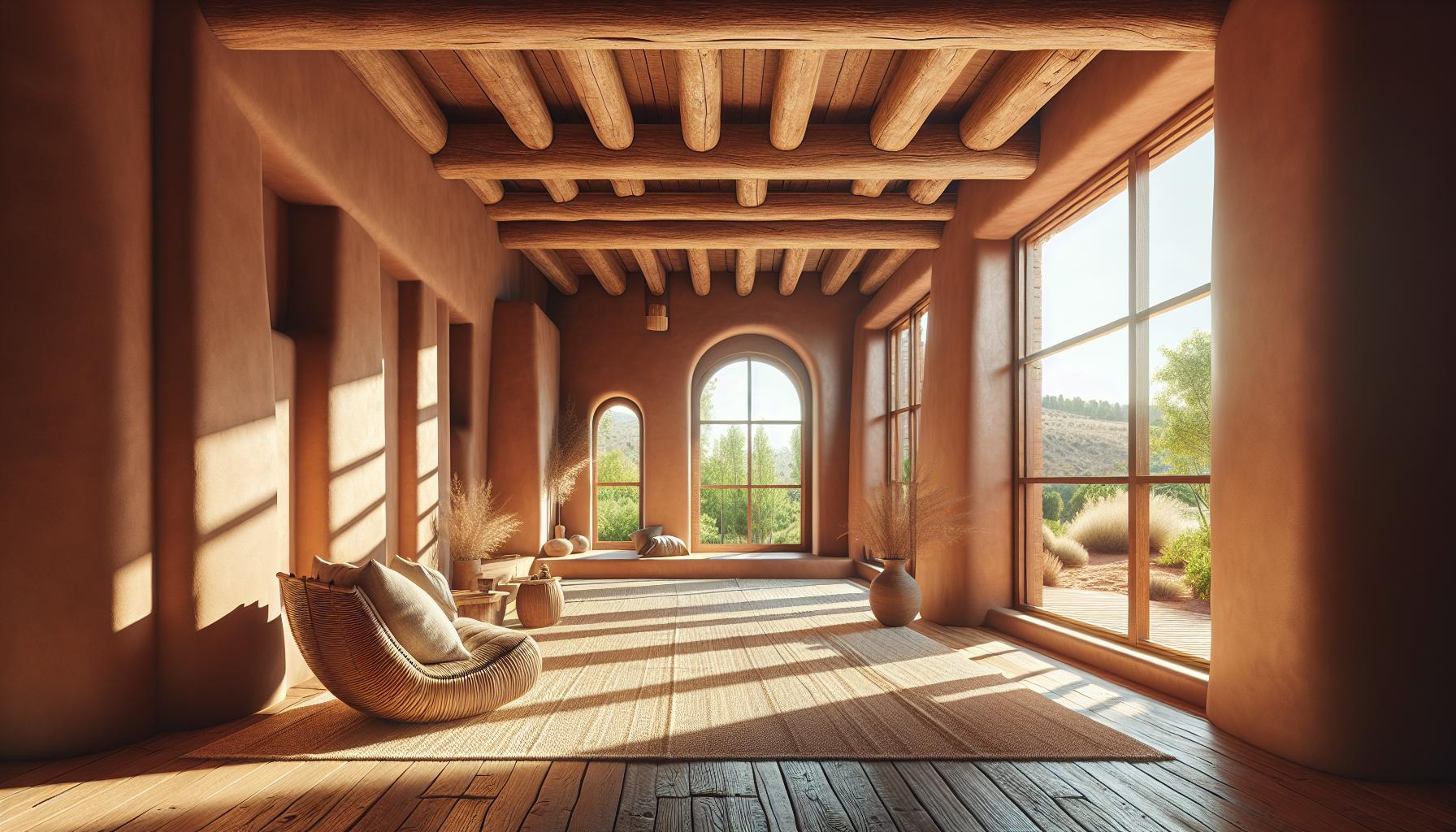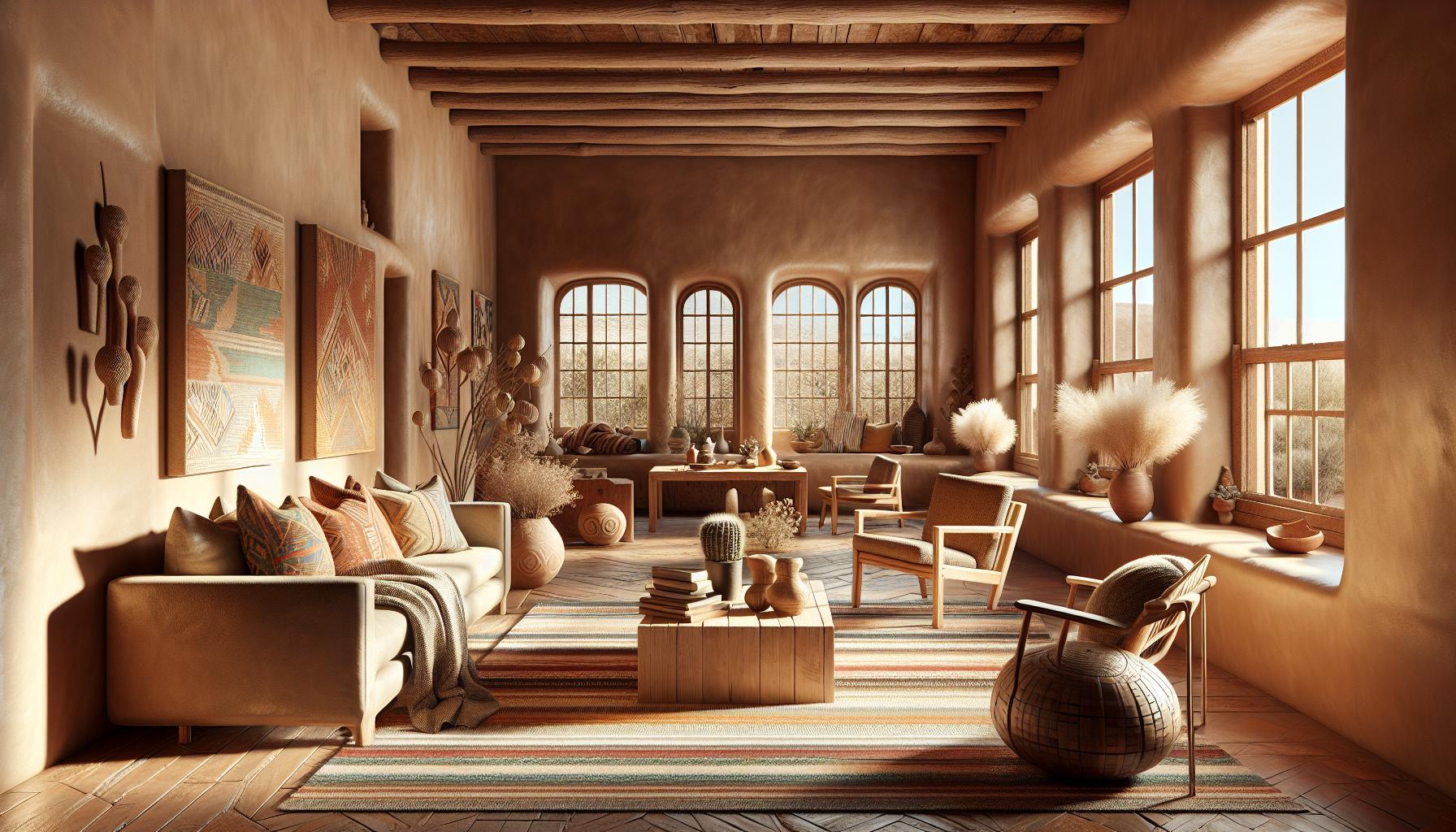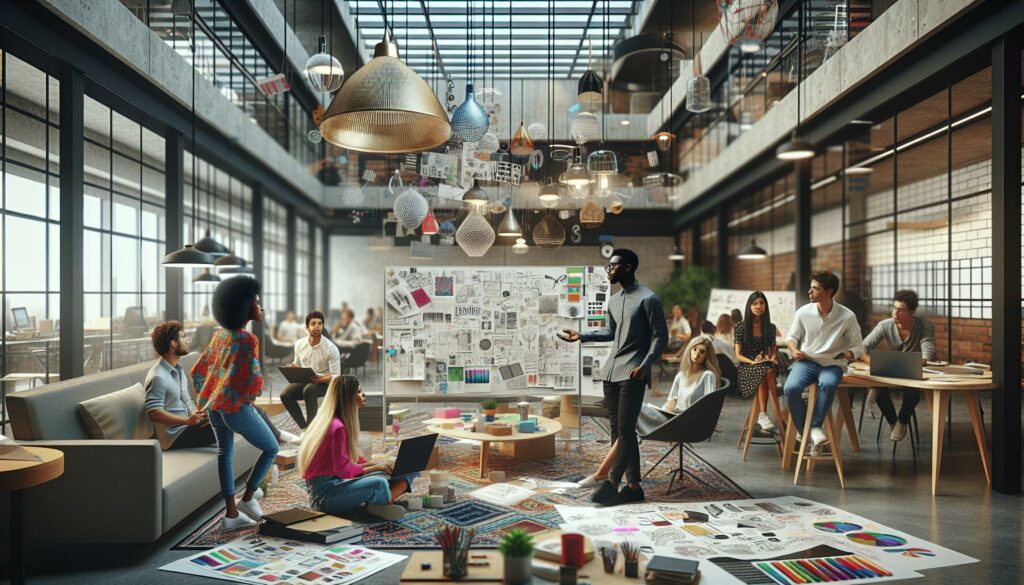Adobe interior design isn’t just about slapping some mud on the walls and calling it a day. It’s a vibrant blend of tradition and innovation that transforms spaces into cozy havens. Imagine walking into a room that feels like a warm hug from Mother Nature herself. With its earthy tones and textured finishes, adobe design invites a sense of tranquility that’s hard to resist.
Adobe Interior Design
Adobe interior design blends traditional elements with contemporary aesthetics, emphasizing a natural connection to the environment. This design style often incorporates organic shapes and materials that reflect the surrounding landscape. Earthy tones dominate the color palette, creating a soothing atmosphere in residential and commercial spaces.
Natural materials like clay and stone contribute to the tactile quality of the interiors. Textured finishes play a crucial role in adding depth and character to walls and surfaces. These choices enhance the comfortable and inviting feel associated with Adobe design.
Spaces designed with Adobe principles tend to prioritize functionality and simplicity. Open floor plans encourage light and airflow, promoting a sense of freedom and tranquility. Design elements such as arched doorways and beamed ceilings create visual interest while maintaining a cohesive look.
Sustainability often aligns with Adobe interior design. Designers frequently source local materials and focus on energy-efficient solutions. By incorporating natural light and ventilation, these designs minimize the need for artificial energy consumption.
Furnishings typically draw inspiration from regional crafts, merging form and function to reflect the character of Adobe architecture. Accessories may include handcrafted pottery, woven textiles, and artworks that evoke the area’s cultural heritage. Each item complements the overall aesthetic and reinforces the connection to the landscape.
Embracing the warmth and charm of this design style invites nature into living spaces. Through careful selection of colors, materials, and layouts, Adobe interior design fosters environments that feel both serene and engaging.
Key Principles of Adobe Interior Design

Adobe interior design centers around the harmonious blend of tradition and contemporary aesthetics, creating inviting spaces. Key principles include the use of natural materials and integration with the surrounding landscape.
Use of Natural Materials
Natural materials play a crucial role in Adobe interior design. Clay, stone, and wood contribute to aesthetic value and sustainability. Textured finishes enhance visual appeal while providing tactile experiences. These elements reflect the environment and create an organic feel. Local sourcing minimizes environmental impact and supports regional craftsmanship. Furnishings often feature handcrafted items, reinforcing a connection to cultural heritage. Textiles also frequently showcase natural fibers, adding warmth and richness to interiors.
Integration with Landscape
Integration with the landscape emphasizes a seamless flow between indoor and outdoor spaces. Adobe design elements mirror natural surroundings through organic shapes and earthy color palettes. Large windows and sliding doors invite natural light, creating a connection to nature. Thoughtful placement of structures enhances views and promotes tranquility. Outdoor living areas often extend the functional space, allowing residents to enjoy the environment. This design principle fosters a sense of harmony, blending built environments with the beauty of nature.
Benefits of Adobe Interior Design

Adobe interior design offers numerous benefits that enhance both living spaces and the surrounding environment.
Environmental Sustainability
Sourcing local materials forms a foundation of this design approach. Clay, stone, and wood, commonly used in Adobe design, promote sustainable practices. Opting for these natural resources minimizes transportation emissions and supports local economies. Energy-efficient solutions come into play as well, reducing reliance on artificial energy consumption. Choosing features like large windows enhances natural light while decreasing electricity usage. Sourcing furniture locally further reinforces sustainability by reducing the carbon footprint. Focusing on these environmentally friendly principles contributes to a healthier planet and creates spaces that feel connected to nature.
Aesthetic Appeal
Warm earthy tones play a crucial role in creating inviting environments. This design style integrates organic shapes and materials that reflect the natural landscape. Textured finishes, such as plaster or rough wood, add depth and visual interest to interiors. Cultural heritage shines through handcrafted furnishings, enhancing the overall aesthetic. With a harmonious balance between traditional and contemporary elements, Adobe interiors captivate with their unique style. Implementing spacious layouts emphasizes airflow and natural light, making rooms feel more expansive. Adobe design thrives on the use of natural fibers in textiles, contributing to a cozy and rich atmosphere that invites relaxation.
Popular Adobe Interior Design Styles

Adobe interior design showcases a variety of styles, each reflecting unique characteristics and cultural influences. Two prominent styles are Southwestern Style and Modern Adobe Design.
Southwestern Style
Southwestern Style embodies traditional elements of the American Southwest. This approach features vibrant colors inspired by desert landscapes, including reds, oranges, and blues. Clay tiles add texture to floors, while handcrafted pottery often serves as focal points. Textiles in Southwestern spaces usually showcase bold patterns, enhancing the cultural richness. Natural materials, such as adobe bricks and timber, contribute to an authentic, rustic atmosphere. Arched doorways and wooden beams accentuate the connection to traditional architecture. This style promotes a cozy, inviting environment drawing inspiration from the surrounding landscape.
Modern Adobe Design
Modern Adobe Design integrates contemporary aesthetics with classic adobe elements. Clean lines and minimalist decor replace excessive ornamentation, creating open spaces that feel light and airy. Color palettes often prioritize neutral tones, allowing for a serene environment. Incorporating large windows brings in ample natural light, blurring the lines between indoors and outdoors. Modern furnishings may feature sleek designs, but they still use natural materials like wood and stone for warmth. This design style embraces sustainability by promoting energy efficiency and local sourcing. Spaces offer functionality alongside elegance, creating a harmonious atmosphere ideal for modern living.
Adobe interior design stands out for its unique blend of tradition and modernity. It creates spaces that not only look beautiful but also feel inviting and sustainable. By utilizing natural materials and earthy tones, it fosters a deep connection to the surrounding environment.
The emphasis on open layouts and natural light enhances tranquility, making homes feel like serene retreats. Whether through Southwestern Style or Modern Adobe Design, this approach highlights the versatility of Adobe aesthetics.
Ultimately, Adobe interior design offers a harmonious balance of functionality and beauty, making it a timeless choice for those seeking to enrich their living spaces while honoring nature and cultural heritage.



